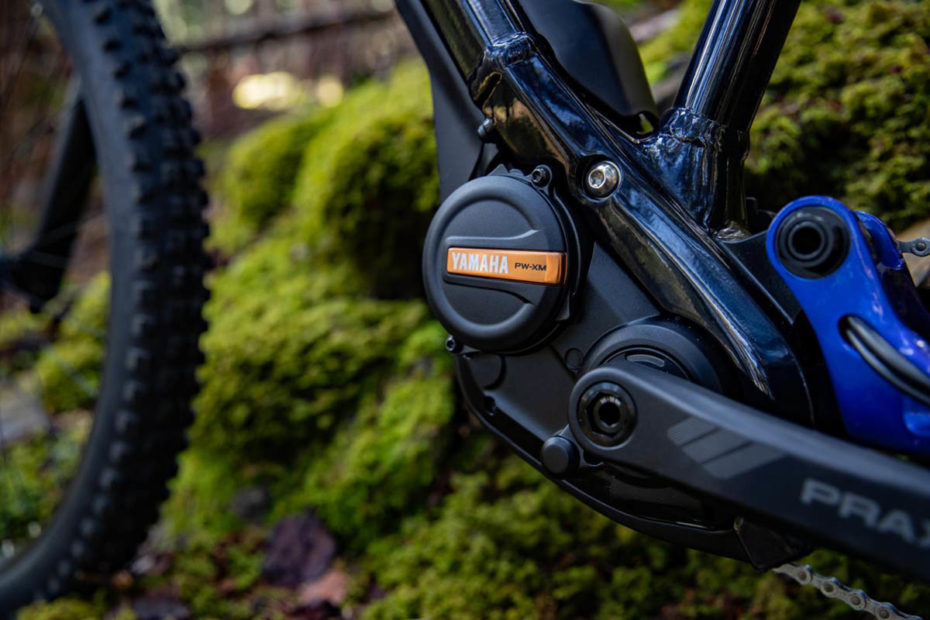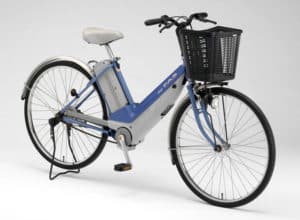Exactly 30 years ago, Yamaha launched its first bicycle on which an electric motor supported the riders. At 31 kilograms, the PAS did not weigh much more than today’s pedelec. However, its battery lasted for just 20 kilometres. Of course, the recently presented Booster and Booster Easy effortlessly surpass this mark. However, Yamaha did not bring these successors to the PAS to this year’s Eurobike. Instead, a new motor was allowed to enjoy the spotlight.
Striving for the maximum
In 1993, the PAS explored what was technically feasible at the time. The PW-XM, Yamaha’s new flagship in the field of mid-mounted motors, has the same ambition. It therefore considers itself to be in the tradition of the former pioneer of individual urban mobility. However, its preferred field of application is off paved roads and paths. You are more likely to encounter it on high-priced e-mountain bikes, where the bike manufacturers have resorted to the very finest components in order to keep the total weight of the bike as low as possible.
When the last bit of weight is crucial on a bike and at the same time the performance of a full-power motor is required, then the PW-XM feels exactly in its element. It weighs 2.6 kilograms and yet has a torque of 85 Newton metres. With this weight-to-torque ratio, it ranks first in Yamaha’s range. It even leaves the Bosch Performance Line CX Race just behind.
Different material, different design
In fact, a lot of the PW-XM is reminiscent of its Bosch counterpart. As with the competitor, the big secret of the lower weight lies primarily in the housing. Magnesium replaces the aluminium used in both the PW-X3 and the Bosch Performance Line CX. The change in material is responsible for the absolute majority of the weight saving. At the end of the day, the PW-XM has an advantage of around 250 grams over the PW-X3.
Visually, this change is not noticeable. Another detail of the newcomer, however, is. The specially developed housing features additional cooling fins. These allow the heat accumulated inside the motor to be dissipated more effectively to the outside. So far, such a design is missing on Yamaha’s power units. According to the manufacturer, however, it will also be used in the future on models of the series with higher quantities.
A third significant development is the slightly revised bearings and the improved seal. The latter not only keeps dirt and moisture out more effectively, but also contributes slightly to the lower weight.
- PW-XM sealing
- PW-X3 sealing
Harmonious integration
Basically, the PW-XM and PW-X3 have many parallels. In some places there is simply no need for change. This applies, for example, to the motor mount. It is completely identical to that of the PW-X3 and PW-S2. This means that bicycle manufacturers can use existing frames if they want to introduce the PW-XM. Features such as the Automatic Assist Mode or the Zero Cadence technology also link all three units together. In addition, the PW-XM is compatible with all current displays, control units and batteries.
Direct sales put the kibosh on the Booster
What remains is the small mystery of why Yamaha only showed the motor and not its own complete bikes in Frankfurt am Main? Well, the company from Japan apparently considers the Eurobike primarily a B2B platform. And since both Booster models are created in-house and distributed via Yamaha motorbike dealers instead of bike shops, there were simply hardly any powerful arguments why they should be in the halls. Besides, they are not among the candidates for which a PW-XM is intended.
Technical data of the Yamaha PW-XM
- Rated voltage: 36 V
- Rated power: 250 W
- Max. assisted speed: 25 km/h
- Max. torque: 85 Nm
- Weight: 2.6 kg
- Assistance modes: Eco mode / Standard mode / High-performance mode / Automatic mode, which selects the appropriate mode depending on the riding situation
Pictures: Yamaha Motor Europe; Yamaha Motor Co, Ltd; Elektrofahrrad24








Are these bikes available in Ireland? Do you recommend a Hub motor V a Wheel motor. I’m moving from a DAHON folding, pedal bike.
I’m old (78) & wish to paly safe. Perhaps I should look at a 3 wheeler. Advice please. Regards Dónal
Hello Dónal,
Let’s start with Yamaha itself. The company has been producing its own ebikes for some time now. However, it looks like they are not currently being sold in Ireland. Besides that, there are other bike manufacturers using Yamaha motors in their ebikes. You can find a list here.
https://www.yamaha-motor.eu/ie/en/b2b/ebike/brands-partners/
Some of these manufacturers are certainly also present in Ireland.
Unfortunately, this exchange via the blog is not suitable for detailed advice. Any bike dealer in your neighbourhood will certainly be able to do this better. After all, there are many factors to consider when looking for a suitable model. And for basic information on which type of motor and which type of ebike might be right for you, it’s definitely worth going to the shop first.
Cheers, Matthias